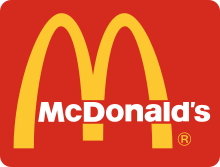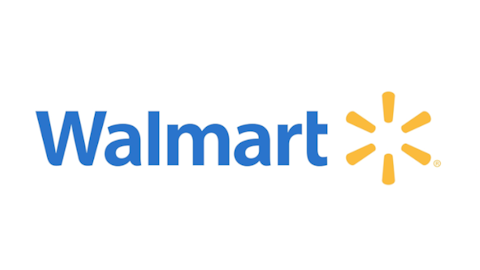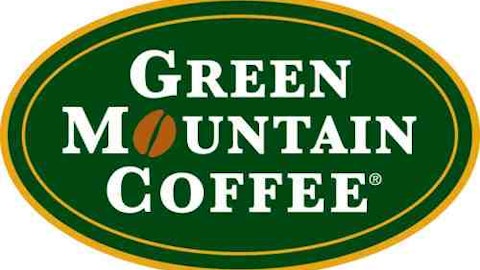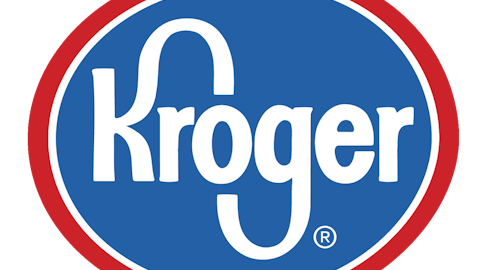McDonald’s Corporation (NYSE:MCD) has collaborated with Visa Inc (NYSE:V) on a website offering financial advice to its employees featuring a sample budget scenario for a full time employee and frankly it’s unreal what they think a person needs to live.

After rent $600, car payment $150, heating and electric $140, car and home/renters insurance $150, health insurance $20, cable/phone $100, there is $100 left over presumably for food and $100 for savings. One can only hope the workers get to eat a meal at one of the two jobs at a discount. And just where are they buying health insurance for $20? This leaves $750 cash for emergencies, like clothing, laundry, medicine, etc.
Don’t kid yourself that we’re just talking about teenagers or college kids, according to the Economic Policy Institute 87.9% of minimum wage workers are age 20 or older. Said budget has no reference to children or other possible dependents.
After controversy over McDonald’s Corporation (NYSE:MCD) workers in Pennsylvania and New York getting paid by fee-based debit cards prompted a front page New York Times story and a class-action lawsuit McDonald’s Corporation (NYSE:MCD) should have been walking on Egg McMuffin shells when it comes to pay issues.Is it just a case of gross insensitivity or just plain ignorance? You be the judge.
McDonald’s Corporation (NYSE:MCD) hasn’t been the best performer of late and if it wasn’t a Dividend Aristocrat would have little to recommend it to potential investors besides sheer size and brand recognition.
However, the worst offender is the nation’s largest private employer, Wal-Mart Stores, Inc. (NYSE:WMT) with its well-publicized decision not to open three Wal-Marts in Washington, DC if forced to pay a “living wage” as determined by the DC City Council.
Although Wal-Mart Stores, Inc. (NYSE:WMT) supported Obamacare, the US Chamber of Commerce denounced their support charging the company was only endorsing it as an anti-competitive strategy. Meanwhile, Wal-Mart Stores, Inc. (NYSE:WMT) enacted a policy which started January 1 stating workers working less than 30 hours wouldn’t qualify for health insurance, raising the bar from the previous 24 hours per week. Full time Wal-Mart Stores, Inc. (NYSE:WMT) workers aren’t any more secure either as coverage for spouses can be lost if hours drop at any time to part time status.
The Washington Post Company (NYSE:WPO) opinion writer Harold Meyerson is not the first editorial writer to point out that Wal-Mart employees make up the highest working poor percentage in many states’ Medicaid and food stamp rolls, noting in Ohio those Wal-Mart Stores, Inc. (NYSE:WMT) employees were closely followed by McDonald’s Corporation (NYSE:MCD) workers. Wal-Mart Stores, Inc. (NYSE:WMT) benefits from over $2 billion worth of government aid to their employees.
The company has been so disingenuous about so many workplace issues from actual minimal chances of career advancement as an internal Wal-Mart document obtained by The Huffington Post proves, to charges of contesting and thwarting the payment of its workers compensation claims.
What it means for investors
Aside from headline risk Wal-Mart’s and McDonald’s policies are making it more difficult for them to expand, especially Wal-Mart, with major cities less welcoming than ever.
In contrast, Costco Wholesale Corporation (NASDAQ:COST) employees are paid very well for retail, averaging $19 and hour garnering it the moniker of the Anti Wal-Mart in a New York Times article. The company has one of the highest employee retention rates in retail.
Communities welcome a Costco Wholesale Corporation (NASDAQ:COST) with its higher paying jobs that don’t force retailers out of business or add to welfare rolls. Wal-Mart doesn’t seem to have gotten the memo.
Complaints of understocked and badly maintained Wal-Marts are growing in the media due to cuts in employee hours and this is another concern for Wal-Mart investors.
Starbucks Corporation (NASDAQ:SBUX) is an alternative to McDonald’s for the socially responsible investor. Its benefits start at 20 hours work per week. Although pay for employees hovers around minimum wage tips are expected to supplement that and overall, benefits are better than most restaurant/cafe jobs.
MCD Total Return Price data by YCharts
Fundamentally and ethically better
Starbucks Corporation (NASDAQ:SBUX) and Costco are better names going forward than Wal-Mart and McDonald’s with better share price appreciation and expected growth rates.
Gross margin at Wal-Mart has basically stayed flat within a range of 24.66% and 25.50% over 5 years and worsening, currently at the low end at 24.66%. At Costco gross margins have ranged from a much lower 12.13% to 12.92% before the financial crisis but are improving again at a current 12.64%.
Gross margins are great at Starbucks ranging from 52.71% in 2008 to a high of 60.17% in 2010 currently at 56.96%. Gross margins at McDonald’s are almost unchanged from 37.71% in 2008 to today’s 37.61% and contracting from 40.56% in 2011.
McDonald’s is the Dividend Aristocrat but all these have yield: Starbucks 1.20%, Costco 1.10%, McDonald’s 3.00%, and Wal-Mart 2.40%.
Of these four, analysts see single-digit growth at McDonald’s with five year EPS at 8.49%, then Wal-Mart at 9.29%. Much better growth is predicted at Costco at 13.47% and Starbucks shines with 18.93% expected five year EPS growth. I think analysts are right on the money with these figures.
MCD EPS Diluted Quarterly YoY Growth data by YCharts
Trailing P/Es for Starbucks and Costco are rich at 35.33 and 25.21 respectively, these are both global companies with room for expansion. Wal-Mart has a trailing P/E of 15.25 and McDonald’s at 18.71 but they just aren’t growing and competition is nipping at their heels from Target Corporation (NYSE:TGT) (which pays its employees more) and dollar stores for Wal-Mart and The Wendy’s Co (NASDAQ:WEN), Burger King Holdings, Inc. (NYSE:BKC) and Yum! Brands, Inc. (NYSE:YUM) for McDonald’s.
The Foolish takeaway
Costco and Starbucks have performed better than Wal-Mart and McDonald’s and despite less yield total return will continue to be better. McDonald’s and Wal-Mart have headline risk as well as worsening margins. These latest headlines on living wages just reflect a long-term blind spot.
Both Costco and Starbucks are socially responsible investing darlings, especially Starbucks. Starbucks, of all of these, has the best outlook for growth and the highest gross margin and is a good placeholder for quick serve restaurants in a portfolio.
The article An Autopsy of a Living Wage originally appeared on Fool.com and is written by AnnaLisa Kraft.
AnnaLisa Kraft has no position in any stocks mentioned. The Motley Fool recommends Costco Wholesale, McDonald’s, and Starbucks. The Motley Fool owns shares of Costco Wholesale, McDonald’s, and Starbucks. AnnaLisa is a member of The Motley Fool Blog Network — entries represent the personal opinion of the blogger and are not formally edited.
Copyright © 1995 – 2013 The Motley Fool, LLC. All rights reserved. The Motley Fool has a disclosure policy.






